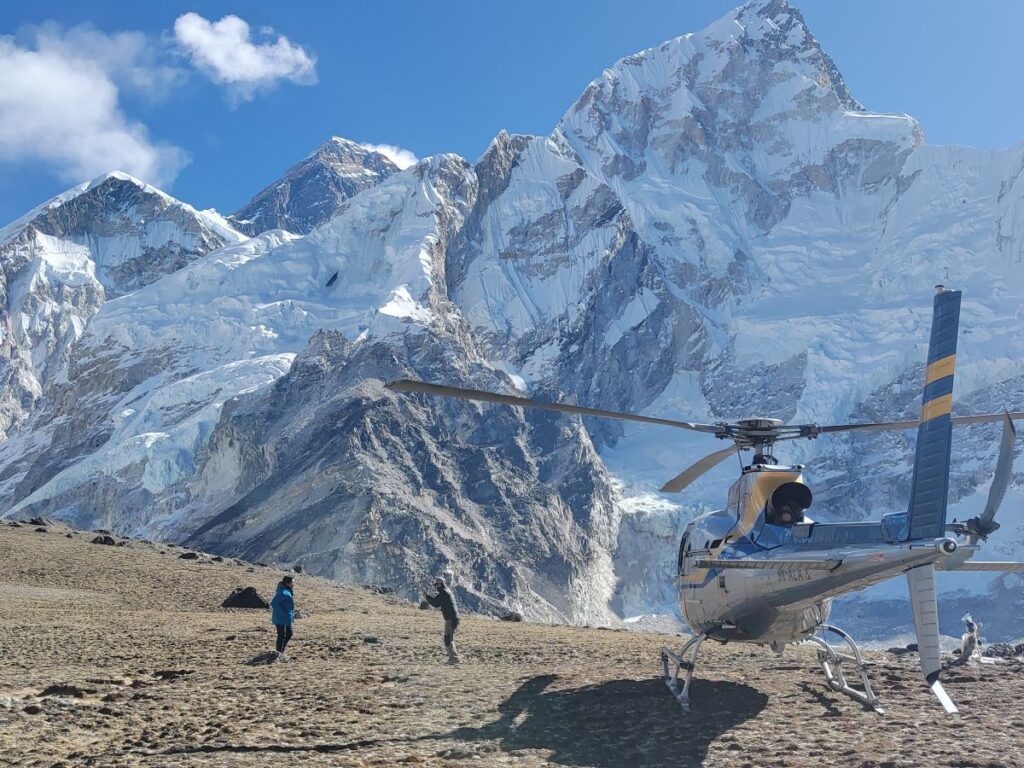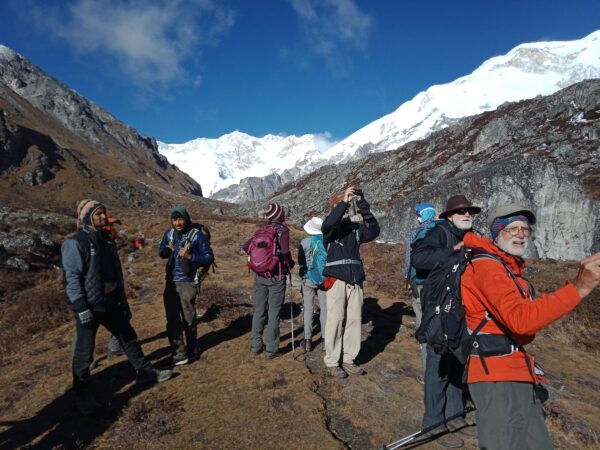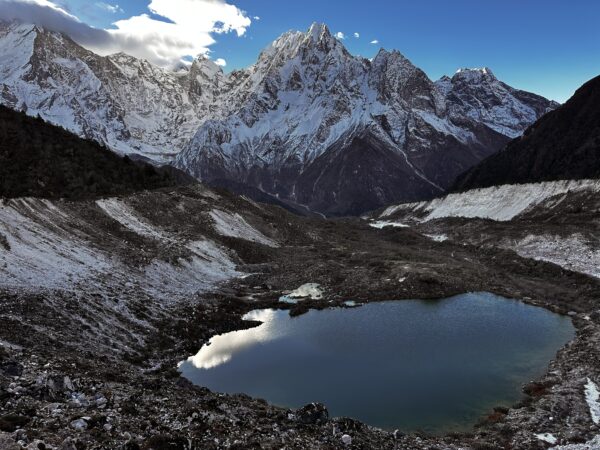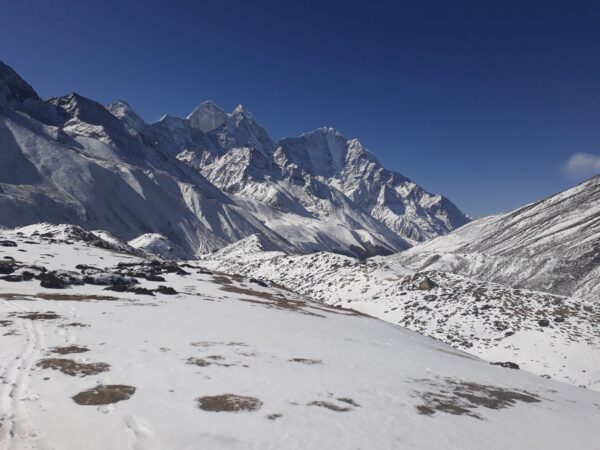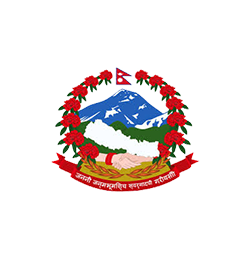Why us?
- Expertise & Experience
- Personalized & Flexible Itineraries
- Local Native Guides
- Competitive Pricing Without Compromising Quality
- Guaranteed Departure
- Top-notch Service
- Hassle-Free Permits & Logistics
- Small Groups for a Better Experience
- Safety First Approach
- Eco-Friendly & Sustainable Travel
- Exceptional Customer Service
- Community Support & Ethical Tourism
Highlights
- Scenic flight from Kathmandu to Lukla, the gateway to Everest.
- Trek through iconic Sherpa villages such as Namche Bazaar, Tengboche, and Phakding.
- Explore the Sagarmatha National Park, home to diverse flora and fauna.
- Cross thrilling suspension bridges adorned with prayer flags.
- Experience the warm hospitality and unique culture of the Sherpa people.
- Reach Everest Base Camp (5,364m) and hike to Kala Patthar (5,645m) for the best panoramic views.
- Enjoy a spectacular helicopter ride back to Kathmandu, offering a bird’s-eye view of the Everest region.
- Complete the trek in just 9 days, saving 4-6 days compared to the traditional trek.
Overview
Embarking on the legendary Everest Base Camp Trek with helicopter return is a dream for adventurers worldwide. Walking in the footsteps of legendary mountaineers and witnessing the grandeur of the Himalayas is an unparalleled experience.
At Everest Hikes, we bring you an exceptional way to complete this adventure—the Everest Base Camp Trek with Helicopter Return. This itinerary allows you to trek to the base of the world’s highest peak and return via a thrilling helicopter ride from Kala Patthar, offering breathtaking aerial views of the Everest region.
Why Choose Everest Base Camp Trek with Helicopter Return?
The standard Everest Base Camp trek spans around 14-16 days, covering approximately 130 km on foot. However, our specialized itinerary reduces the trekking distance to about 65 km, as the return journey is completed via helicopter. This option is perfect for those seeking a more efficient yet equally rewarding experience.
Note: If you’re an elderly person or a child looking to embark on a long trek to Everest, Our 23-day Everest Base Camp trek is the perfect option for you.
Key benefits of choosing the helicopter return option:
- Saves time and energy by eliminating the long return trek.
- Reduces physical strain, making it accessible for more trekkers.
- Provides a stunning aerial view of Everest, Lhotse, Ama Dablam, and surrounding peaks.
- Ensures a comfortable return journey, avoiding potential altitude-related fatigue.
Best Time to Trek Everest Base Camp with Helicopter Return
Selecting the right season ensures the best trekking conditions and a smooth helicopter ride. Here’s a breakdown of the seasons:
Autumn (September-November) – The Ideal Season
Autumn is the most popular time for trekking in Nepal. The monsoon rains wash away dust and pollution, leaving behind crystal-clear skies. With pleasant temperatures ranging from 15°C to 24°C at lower elevations, trekkers enjoy excellent visibility of the majestic Himalayas. However, this is also the peak trekking season, so expect more crowded trails.
Spring (March-May) – The Season of Bloom
Spring is another fantastic time for the Everest Base Camp trek. The temperatures remain stable between 16°C to 23°C, and the trails are adorned with blooming rhododendrons. This season offers excellent visibility, making it ideal for both trekking and helicopter flights. While slightly less crowded than autumn, it still attracts many trekkers.
Summer (June-August) – Monsoon Challenges
The summer months bring heavy rainfall, making trails slippery and increasing the risk of landslides. Clouds often obstruct mountain views, and helicopter flights may face delays due to unpredictable weather. While trekking is still possible, it is not the most recommended time for this adventure.
Winter (December-February) – Cold but Rewarding
Winter trekking is a challenge due to freezing temperatures, especially at higher altitudes where temperatures drop below freezing. However, those who brave the cold are rewarded with stunning snow-covered landscapes and quieter trails. Helicopter flights, however, can be affected by heavy snowfall.
Foods Available on Everest Base Camp Trek with Helicopter Return
A well-balanced diet is essential for a successful Everest Base Camp (EBC) Trek, ensuring that trekkers stay energized and healthy throughout the journey. Here’s what you can expect in terms of meals during the trek:
Breakfast Options
Breakfast at the teahouses along the Everest Base Camp Trek offers a variety of nutritious choices, including:
- Pancakes (Plain, Honey, Chocolate, or Banana)
- Cornflakes and Muesli with Hot Milk
- Local Bread and Chapati
- Porridge (Oats, Rice, or Corn)
- Egg Dishes – Fried eggs, scrambled eggs, boiled eggs, and omelets
- Toast with Butter, Jam, or Honey
- Hash Brown Potatoes
Lunch & Dinner Choices
Lunch and dinner menus are often similar and provide a mix of Nepali, Tibetan, and Western dishes, including:
- Dal Bhat (Rice, Lentils, and Vegetable Curry) – A staple meal providing high energy
- Tibetan Bread & Sherpa Stew
- Thukpa & Spaghetti Noodles
- Pasta, Macaroni, and Pizza
- Momo (Dumplings) – Vegetarian and Non-Vegetarian Options
- Sandwiches, Steaks, and Vegetable Salads
- Different Types of Soups (Vegetable, Mushroom, Garlic, and Chicken)
With fresh ingredients becoming scarce at higher altitudes, it’s advisable to consume locally available and energy-rich foods.
Accommodation on Everest Base Camp Trek with Helicopter Return
Trekkers on the EBC Trek with Helicopter Return experience both comfortable and basic lodging:
Kathmandu Stay
Before and after the trek, you will stay in a three-star hotel in Kathmandu, offering modern amenities and comfortable rooms.
Teahouse Lodging on the Trek
During the trek, accommodation is at local teahouses, which are simple yet cozy. Features include:
- Twin-sharing rooms with basic bedding and warm blankets.
- Wood-paneled or plastered walls to insulate against the cold.
- Dining areas with a central heater (in most teahouses).
- Electric charging available for a small fee (carry a power bank for convenience).
- Hot showers (available at extra cost in select teahouses).
Due to limited availability during peak trekking seasons, booking double rooms in advance is recommended.
Difficulty Level of Everest Base Camp Trek & Helicopter Return
The Everest Base Camp Trek with Helicopter Return is classified as moderately challenging. Here’s what makes it demanding:
- Daily trekking duration: Expect to hike 5 to 7 hours per day on rugged trails.
- High-altitude trekking: The route takes you above 4,000 meters, increasing the risk of altitude sickness.
- Uneven terrain: Trekkers will encounter rocky paths, suspension bridges, deep valleys, and glacial moraines.
- Steep ascents and descents: Some sections require endurance and strong leg muscles.
Who Can Join This Trek?
This trek is suitable for trekkers with moderate fitness levels. Prior hiking experience is helpful but not mandatory. However, physical preparation—including cardio exercises, leg strength training, and altitude acclimatization hikes—is highly recommended.
Travel Insurance for Everest Base Camp Trek with Helicopter Return
Travel insurance is mandatory for this trek, as it involves high-altitude trekking and helicopter evacuation. Everest Hikes requires all trekkers to provide a valid insurance certificate covering:
- Medical emergencies at high altitudes (up to 6,000m)
- Helicopter rescue and evacuation
- Trip cancellations and delays
Important Tips for Travel Insurance:
- Verify that your insurance company covers helicopter evacuations up to 6,000m.
- Don’t rely only on insurance website descriptions; call the provider to confirm coverage.
- Submit your insurance details at least one week before the trek starts.
In case of emergencies, Everest Hikes will arrange immediate helicopter rescue using your insurance coverage.
Altitude Sickness & Prevention on Everest Base Camp Helicopter Return Trek
Altitude sickness, or Acute Mountain Sickness (AMS), occurs when the body struggles to adapt to low oxygen levels. Symptoms usually appear above 3,000 meters and may include:
- Headache & dizziness
- Nausea & vomiting
- Shortness of breath
- Loss of appetite & trouble sleeping
How to Prevent Altitude Sickness?
- Hydrate well – Drink at least 3-4 liters of water per day and avoid alcohol.
- Acclimatize properly – Follow the trek’s itinerary, which includes rest days.
- Take it slow – Walk at a comfortable pace and do not rush.
- Eat a nutritious diet – High-carb meals help sustain energy levels.
- Use preventive medicine (Diamox) – Consult your doctor before taking it.
- Listen to your body – If symptoms worsen, descend immediately.
- Maintain hygiene – Keeping yourself clean reduces infection risks, which can worsen altitude symptoms.
With proper acclimatization and precautions, altitude sickness can be minimized, allowing you to enjoy a safe and rewarding Everest adventure.
Why Choose Everest Base Camp Trek with Helicopter Return?
- Time-efficient – Avoids the long return trek, saving 3-4 extra days.
- Spectacular aerial views – Enjoy unparalleled helicopter views of Everest and the Himalayas.
- Reduces fatigue – No need for knee-straining descents.
- Luxurious experience – A comfortable return journey to Kathmandu.
Plan Your Everest Adventure with Us
Everest Hikes Team is dedicated to offering a safe, comfortable, and unforgettable trekking experience. Our Everest Base Camp Trek with Helicopter Return is designed for adventurers who wish to witness the beauty of Everest in a shorter time without compromising the thrill of the trek.
Are you ready to embark on this incredible journey? Contact us today to book your adventure of a lifetime!
Outline Itinerary
Day 01: Flight to Lukla (2,860m) & Trek to Phakding (2,610m) – 35 min flight, 3-4 hrs trek
Day 02: Trek from Phakding to Namche Bazaar (3,440m) – 5-6 hrs
Day 03: Acclimatization Day in Namche Bazaar
Day 04: Trek from Namche Bazaar to Tengboche (3,860m) – 5-6 hrs
Day 05: Trek from Tengboche to Dingboche (4,410m) – 5-6 hrs
Day 06: Acclimatization Day in Dingboche (4,410m)
Day 07: Trek from Dingboche to Lobuche (4,940m) – 5-6 hrs
Day 08: Trek to Everest Base Camp & Return to Gorak Shep (5,164m) – 7-8 hrs
Day 09: Hike to Kala Patthar & Helicopter Return to Kathmandu (1 hr flight)
Everest Base Camp Trek with Helicopter Return – 9 Days - Itinerary
Flight to Lukla (2,860m) & Trek to Phakding (2,610m) – 35 min flight, 3-4 hrs trek
Your Everest Base Camp adventure begins with an early morning flight from Kathmandu to Lukla, offering breathtaking views of the Himalayan range. The short but thrilling flight lands at Tenzing-Hillary Airport, one of the most famous mountain airports in the world. Upon arrival, you can take some time for last-minute gear shopping in Lukla before beginning your trek.
The journey to Phakding is relatively easy, featuring gentle descents and scenic trails through lush landscapes. You’ll cross suspension bridges over the Dudh Koshi River, pass through traditional Sherpa villages, and enjoy glimpses of snow-capped peaks. After approximately 3 hours of trekking, you’ll arrive at Phakding, where you’ll rest at a comfortable teahouse for the night.
Trek from Phakding to Namche Bazaar (3,440m) – 5-6 hrs
The trek from Phakding to Namche Bazaar is a rewarding yet challenging day. You’ll follow the Dudh Koshi River, crossing several hanging bridges, including the famous Hillary Suspension Bridge. Along the way, you’ll stop at Monjo, the entrance to Sagarmatha National Park, where your trekking permits will be checked.
The trail gradually ascends through dense pine forests, offering spectacular views of Thamserku (6,608m) and Kusum Kanguru (6,367m). The final stretch is a steep climb, but as you approach Namche, you might get your first glimpse of Mount Everest. Namche Bazaar, often called the gateway to Everest, is the region’s commercial hub, offering modern amenities such as cafes, bakeries, and shops. Overnight stay in Namche.
Acclimatization Day in Namche Bazaar
To adjust to the altitude and prevent altitude sickness, an acclimatization day is crucial. You’ll embark on a short hike to Everest View Hotel (3,880m), one of the highest-altitude hotels in the world, offering panoramic views of Everest, Ama Dablam, Lhotse, and Nuptse.
Alternatively, you can visit Khumjung and Khunde villages, where you’ll see the famous Yeti scalp at the Khumjung Monastery. Exploring Namche’s Sherpa Culture Museum and Sagarmatha National Park Visitor Center is another great way to spend the day. After a relaxed yet insightful day, you’ll return to Namche Bazaar for the night.
Trek from Namche Bazaar to Tengboche (3,860m) – 5-6 hrs
Leaving Namche, the trail offers stunning views of Everest, Ama Dablam, and Thamserku. The route is a mix of gentle ascents and descents, passing through rhododendron forests and small villages like Phunki Tenga.
After a steep uphill climb, you’ll reach Tengboche Monastery, the largest monastery in the Khumbu region. Here, you can witness Buddhist ceremonies while enjoying a breathtaking sunset view over Everest and Ama Dablam. Overnight at a teahouse in Tengboche.
Trek from Tengboche to Dingboche (4,410m) – 5-6 hrs
After a morning visit to Tengboche Monastery, you’ll descend through forests to Deboche before crossing the Imja River via a suspension bridge. The trek continues through Pangboche, a beautiful Sherpa village known for its ancient Pangboche Monastery.
Gradually, the landscape changes from lush forests to alpine terrain, marking the start of the high-altitude experience. Upon reaching Dingboche, you’ll be surrounded by stunning views of Ama Dablam, Island Peak, and Lhotse. Overnight stay in Dingboche.
Acclimatization Day in Dingboche (4,410m)
Today, you’ll take a hike to Nangkartshang Peak (5,083m) for stunning views of Makalu, Cho Oyu, and Lhotse. The hike helps your body adjust to the high altitude, reducing the risk of acute mountain sickness (AMS). After enjoying the scenic landscapes, you’ll return to Dingboche for rest and recovery.
Trek from Dingboche to Lobuche (4,940m) – 5-6 hrs
Today’s trek takes you through Dughla (Thukla), where you’ll pass Everest Memorials, honoring climbers who lost their lives in Everest expeditions. The trail follows the Khumbu Glacier, with jaw-dropping views of Pumori, Lingtren, and Khumbutse. After reaching Lobuche, you’ll rest for the night at a teahouse.
Trek to Everest Base Camp & Return to Gorak Shep (5,164m) – 7-8 hrs
Today is the most exciting day! The trek to Gorak Shep, a small settlement near Everest Base Camp (EBC), is challenging due to rough and rocky trails. After a short break at Gorak Shep, you’ll push towards Everest Base Camp, standing at 5,364m.
Upon reaching EBC, you’ll experience the majestic Khumbu Icefall and celebrate your achievement with stunning views of Everest, Nuptse, and Pumori. After capturing unforgettable memories, you’ll return to Gorak Shep for an overnight stay.
Hike to Kala Patthar & Helicopter Return to Kathmandu (1 hr flight)
Your journey concludes with a sunrise hike to Kala Patthar, the best viewpoint for Mount Everest. Standing at 5,550m, you’ll witness a golden sunrise over Everest, Lhotse, and Ama Dablam.
After soaking in the breathtaking view, you’ll take a scenic helicopter flight back to Kathmandu, avoiding the long return trek. The chopper ride offers aerial views of the Himalayan glaciers, valleys, and Sherpa settlements before landing in Kathmandu, marking the end of your Everest Base Camp Trek with Everest Hikes..
Inclusions
What's included
- Airport transfers - pickup and drop off
- Boutique hotel accommodation in Kathmandu - 2 nights with breakfast included
- An Experience English speaking guide
- Porter - 1 porter for every 2 trekkers
- All Meals - breakfast, lunch, and dinner and Teahouse accommodation during the trek
- Kathmandu to Lukla Flight Ticket
- Gorakshep - Lukla - Kathmandu by Helicopter (sharing basis)
- All required trekking permits (National Park Entry Fee and Pasang Lhamu Rural Municipality Entry Fee)
- Guide insurance with food and accommodation
- Basic Medical kits
- Sleeping and duffel bag, down jacket, trekking poles (should be returned after the trek)
- Emergency Helicopter Evacuation Service Arrangement Only (should cover by your travel insurance)
- All required paper works and government taxes
- Farewell dinner
What's not included
- International Flight
- Nepal Travel Visa Fee
- Hotel in Kathmandu
- Personal Medical and Travel insurance (Should cover helicopter evacuation)
- Guide, Porter and Driver tips
- Personal Gears (equipment)
- Personal bill
- Lunch and Dinner in Kathmandu
- All other personal expense of beverages (hard and soft drinks)
- All other things not mentioned in the inclusion
Equipment
Recommended Trekking Gears
Clothing
- Base Layers (Moisture-Wicking)
- Thermal tops and bottoms (polyester or merino wool)
- Lightweight long-sleeve shirts
- Insulating Layers
- Fleece jacket or pullover
- Down jacket (for high-altitude treks)
- Warm sweaters
- Outer Layers (Shells)
- Waterproof and windproof jacket (Gore-Tex or similar)
- Waterproof pants
- Trekking Pants
- Quick-dry pants
- Convertible hiking pants (zip-off into shorts)
- Trekking Shirts
- Lightweight and breathable T-shirts
- Long-sleeve shirts with UV protection
- Headwear
- Wide-brim hat or cap for sun protection
- Warm beanie for cold temperatures
- Buff or scarf for dust and wind
- Gloves
- Lightweight trekking gloves
- Insulated gloves for higher altitudes
- Socks
- Moisture-wicking trekking socks
- Thermal socks for colder regions
- Footwear
- Sturdy and waterproof trekking boots (well broken-in)
- Comfortable sandals or camp shoes (for evenings/rest days)
- Gaiters (optional, for snow or muddy trails)
Backpacks & Bags
- Backpack
- 40-50L capacity for multi-day treks
- Comfortable straps and rain cover
- Daypack
- 20-30L for short treks or carrying essentials during the day
- Duffel Bag
- Used if porters are carrying your gear (for organized treks)
- Dry Bags
- To keep electronics and clothes dry in wet conditions
Sleeping Gear
- Sleeping Bag
- 4-season sleeping bag (rated for -10°C to -20°C for high-altitude treks)
- Sleeping bag liner (optional, for extra warmth and hygiene)
- Sleeping Pad (if camping)
- Lightweight and inflatable or foam pads for comfort
Trekking Accessories
- Trekking Poles
- Adjustable and lightweight poles (essential for steep ascents/descents)
- Water Bottle/Hydration System
- Insulated bottle (to prevent freezing at high altitudes)
- CamelBak or similar hydration reservoir
- Water Purification
- Water filters, purification tablets, or UV sterilizers
- Sunglasses
- UV protection (Category 3 or 4 for snowy conditions)
- Headlamp
- With spare batteries (essential for early morning or late-night treks)
- Multi-tool or Knife
- For various small tasks
- First Aid Kit
- Bandages, blister patches, antiseptic wipes, painkillers, Diamox (for altitude sickness), etc.
- Lip Balm
- SPF-protected to prevent chapping
- Sunscreen
- High SPF for UV protection at higher altitudes
- Personal Toiletries
- Biodegradable soap, toothpaste, toothbrush, quick-dry towel, wet wipes, and toilet paper
Optional but Useful Items
- Camera
- To capture the stunning scenery (extra batteries and memory cards are a must)
- Snacks
- Energy bars, trail mix, or chocolate for quick energy boosts
- Power Bank/Solar Charger
- For charging devices in remote areas
- Books or E-Readers
- For downtime during rest days
- Earplugs
- To block out noise in lodges or camps
- Notebook/Journal
- To record your trek experience
Clothing Packing Tips
- Layering is key: It helps regulate your body temperature and adapt to changing weather.
- Avoid cotton: It retains moisture and dries slowly, which can lead to discomfort or hypothermia.
- Pack light: Only carry what is absolutely necessary to avoid unnecessary weight.
Gear Rentals in Nepal
If you're worried about carrying too much gear, trekking hubs like Kathmandu and Pokhara offer trekking equipment rentals and sales. You can find items like sleeping bags, down jackets, and trekking poles at reasonable prices. However, ensure you check the quality before renting.

